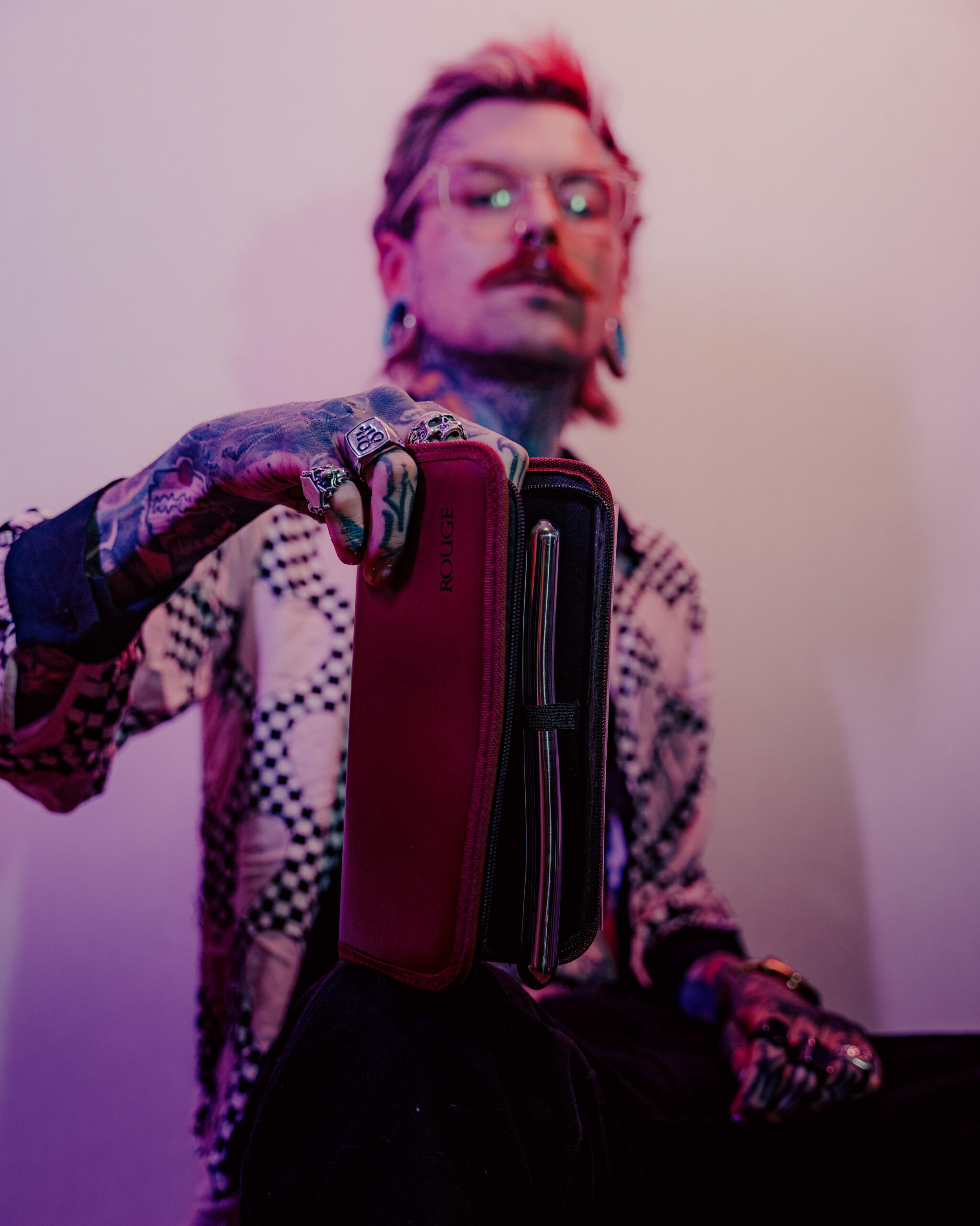Defining Pansexuality
Pansexuality is a sexual orientation characterized by romantic or sexual attraction to people regardless of their gender identity or expression.
It’s an expansive and fluid concept that goes beyond the traditional binary understanding of male and female, embracing all genders on a spectrum.

A key element of pansexuality is the rejection of limiting categories and labels when it comes to attraction. Pansexual individuals may be attracted to people who identify as men, women, transgender, non-binary, genderfluid, or any other gender identity.
The focus is on the individual person and their unique qualities, rather than their assigned sex at birth or how they choose to express their gender.
Historically, the term “pansexual” has evolved over time.

Initially, it was sometimes used synonymously with bisexuality, but today, many pansexual people prefer to distinguish the two terms.
Bisexuality often refers specifically to attraction to both men and women, while pansexuality encompasses a wider range of gender identities.
Understanding pansexuality requires moving beyond the limitations of the binary. It’s about recognizing that gender is a complex and multifaceted aspect of identity, and that attraction can exist across this spectrum in diverse and unique ways.
It’s important to note that pansexual individuals, like all people, have diverse experiences and expressions of their sexuality. Some may be comfortable labeling themselves as pansexual, while others may use different terms or no label at all.
Ultimately, respecting individual identities and preferences is crucial in fostering inclusivity and understanding.
Pansexuality is a sexual orientation characterized by romantic and/or sexual attraction to people regardless of their **gender identity** or **expression**.
Unlike **heterosexuality**, which involves attraction primarily to the opposite gender, and **homosexuality**, which involves attraction to the same gender, pansexuality transcends these binary classifications. Pansexual individuals may be attracted to men, women, transgender people, non-binary individuals, and everyone in between.
The term “pansexual” originates from the Greek words “pan,” meaning *all*, and “sex,” referring to gender.
It emphasizes the inclusivity of this orientation, signifying attraction to a wide spectrum of genders rather than being limited by specific categories.
Historically, the understanding and acceptance of pansexuality have evolved over time. In earlier decades, it was often conflated with **bisexuality**. However, many pansexual individuals feel that “bisexual” implies attraction to only two genders (typically male and female), while “pansexual” encompasses a broader range.
It’s crucial to recognize that sexual orientation is a personal experience, and individuals may define it in different ways. Some pansexual people may identify primarily with one gender or another, while others may experience attraction across multiple genders in varying degrees.
Embracing pansexuality involves accepting and celebrating the fluidity of attraction. It challenges traditional notions of **gender norms** and promotes a more inclusive understanding of love and relationships.
For individuals who identify as pansexual, it can be empowering to embrace their true selves without feeling restricted by societal expectations or stereotypes.
It encourages open communication and respect for diverse experiences, fostering a more accepting and understanding society.
Historical Perspectives
Historical perspectives on sexuality have undergone a dramatic transformation, shifting from rigid binary models to more fluid and inclusive understandings. The concept of *pansexuality*, defined as sexual, romantic, or emotional attraction to people regardless of their gender identity or expression, is a relatively recent addition to this evolving landscape.

Prior clit clip to the 20th century, dominant societal norms largely confined sexuality within a heterosexual framework. *Same-sex relations* were often criminalized and viewed as deviant, while nonconformity to traditional gender roles was met with social stigma.
The early 20th century witnessed the emergence of *homophile* movements advocating for the rights of LGBTQ+ individuals. These movements challenged societal norms and contributed to a growing recognition of diverse sexual orientations.
In the mid-20th century, the term *pansexual* appeared, though its usage remained largely within fringe communities. The feminist movement of this period also played a significant role in dismantling rigid gender roles and promoting gender fluidity, paving the way for a broader understanding of sexuality.
The latter half of the 20th century saw increasing visibility and acceptance of *LGBTQ+ identities*. This progress was accompanied by a greater awareness of the spectrum of human sexual attraction and expression. Terms like *bisexual* and *pansexual* gained traction, reflecting a move away from strictly binary categories.
Today, *pansexuality* is increasingly recognized as a valid and distinct sexual orientation. Online platforms and social movements have played a crucial role in fostering community and visibility for pansexual individuals, dismantling stigma and promoting understanding.
While progress has been made, challenges remain. Discrimination and prejudice against pansexual individuals persist in some societies. Ongoing efforts are needed to ensure full equality and acceptance for all individuals, regardless of their sexual orientation or gender identity.
Historical perspectives on sexuality have been deeply influenced by societal norms and power structures, often leading to restrictive and binary understandings of desire. For centuries, dominant cultures have sought to define and categorize human experience within rigid frameworks, with significant consequences for individuals who fall outside these predetermined categories.
The concept of pansexuality, encompassing attraction to all genders regardless of sexual orientation, challenges these traditional norms by rejecting the artificial divisions imposed on human relationships. Historically, notions of “normal” sexuality have been rooted in heteronormativity, prioritizing and privileging heterosexual relationships while marginalizing other forms of expression.
Pansexuality, with its emphasis on fluidity and inclusivity, directly confronts this historical hegemony by expanding the scope of acceptable desire. It recognizes that sexual attraction is complex and multifaceted, defying simplistic labels and societal expectations.
However, the history of pansexuality is not a straightforward narrative of progress. The term itself has undergone various iterations and interpretations over time, reflecting evolving social attitudes and understandings of gender and sexuality. In early 20th-century Germany, for instance, “pansexual” was used to describe individuals attracted to both sexes and those who defied traditional gender roles.
During the latter half of the 20th century, the term gained traction within feminist and LGBTQ+ circles, becoming associated with a more inclusive understanding of sexuality that transcended the binary categories of male and female.
Despite its evolving definition, pansexuality has always challenged dominant norms by asserting the legitimacy of diverse experiences of desire. Its history is marked by both struggles against societal stigma and advancements in recognizing the spectrum of human sexuality.
Today, pansexuality continues to push boundaries, advocating for greater acceptance and understanding of individuals who embrace fluidity and reject rigid definitions of love and attraction.
By challenging the historical constraints imposed on sexuality, pansexuality contributes to a more equitable and inclusive world where all forms of desire are celebrated and respected.
Representation & Visibility
Representation and visibility are crucial for fostering understanding and acceptance of diverse identities, including pansexuality. When individuals see themselves reflected in media, literature, and everyday life, it affirms their experiences and creates a sense of belonging.
Historically, pansexual representation has been limited, often relegated to stereotypes or portrayed in ways that reinforce misconceptions. This lack of accurate portrayal contributes to societal misunderstandings and can lead to prejudice and discrimination.
Breaking down stereotypes surrounding pansexuality involves:
-
Accurate Portrayal:**
-
Challenging Assumptions:**
-
Amplifying Authentic Voices:
-
Promoting Education:**
Depicting pansexual individuals in diverse and nuanced ways, showcasing their full range of experiences, relationships, and personalities.
Moving beyond simplistic narratives and stereotypes that conflate pansexuality with promiscuity or confusion. Emphasizing the genuine emotional connections and commitment within pansexual relationships.
Platforming the voices and stories of pansexual people, allowing them to share their perspectives and experiences firsthand.
Providing accessible and accurate information about pansexuality, addressing common misconceptions, and fostering empathy and understanding.
Increased representation and visibility play a vital role in dismantling harmful stereotypes. By creating more inclusive and authentic portrayals of pansexual individuals, we can contribute to a society that values diversity, respects individual identities, and celebrates the spectrum of human experience.
Representation and visibility are crucial for marginalized communities, including those who identify as pansexual. When individuals see themselves reflected in media, literature, and everyday life, it validates their experiences and fosters a sense of belonging.
Historically, pansexuality has been underrepresented in mainstream culture. This lack of visibility can lead to feelings of isolation and confusion for pansexual individuals, as they may struggle to understand their own identities and find acceptance from others.
Growing representation of pansexuality is slowly changing this landscape. Increased media portrayals, both positive and nuanced, are helping to raise awareness and understanding of pansexuality among the wider public.
Furthermore, online platforms have become vital spaces for pansexual individuals to connect with others who share their experiences. Social media groups, forums, and dating apps provide opportunities for building community and finding support.
This sense of community is essential for the well-being of pansexual individuals. It offers a safe space to explore their identities, discuss challenges, and celebrate their unique perspectives.
Connecting with others who understand the complexities of pansexuality can help alleviate feelings of loneliness and isolation. It can also provide a source of strength and empowerment as individuals navigate societal expectations and prejudices.
Visibility and representation are not only important for the individual; they also have broader societal benefits. By fostering acceptance and understanding of different sexual orientations, we create a more inclusive and equitable world for everyone.
Catch the full insight here
Access the entire story now
- Sculptra Surrey – Collagen Stimulation Therapy Near Woodmansterne, Surrey - November 4, 2025
- Sculptra Surrey – Collagen Stimulation Therapy Near Kenley, Surrey - November 1, 2025
- Romantic THC Drink Ideas For Date Night - October 30, 2025
